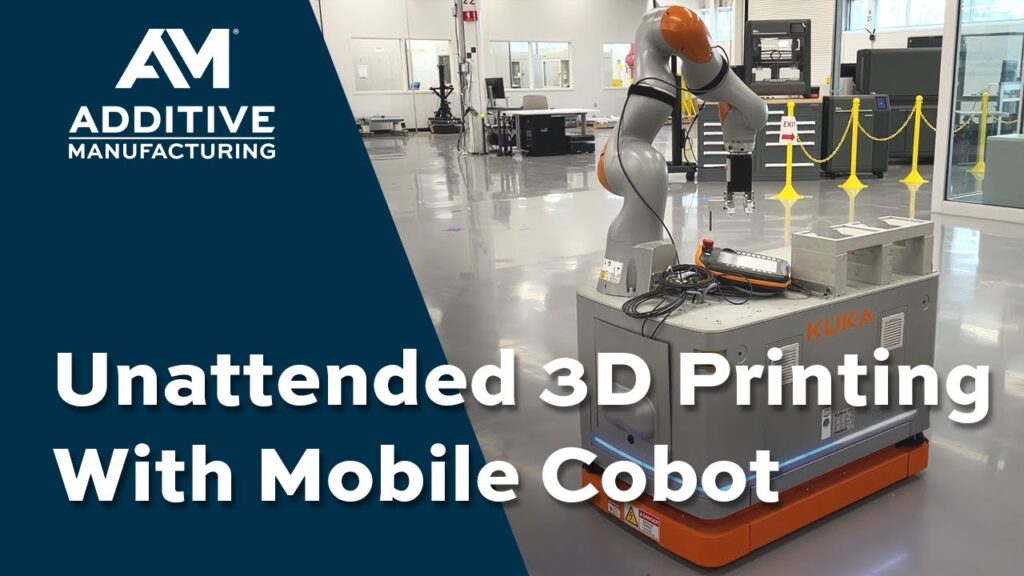Robotics technology has been a game-changer in various industries, revolutionizing production processes and improving efficiency. In the manufacturing sector, industrial robots have become an integral part of operations, performing repetitive tasks with speed, precision, and accuracy. These sophisticated machines have taken automation to a whole new level, and their capabilities continue to evolve.
In recent news, Ford has implemented an autonomous collaborative robot that roams throughout their production facility, enhancing the efficiency of their operations. This innovative robot, equipped with state-of-the-art technology, has been specifically designed to work alongside human operators, providing valuable support and increasing productivity. Let’s explore this fascinating development and the impact it has on the manufacturing industry.
Industrial robots have been a prominent presence in manufacturing for years, taking over labor-intensive tasks and repetitive operations. Their ability to perform these tasks with precision and consistency has significantly contributed to increased productivity and reduced errors. However, these robots were typically fixed in one location, limited to specific tasks within the assembly line.
With advancements in robotics technology, we have seen the emergence of collaborative robots, also known as cobots. These robots are designed to work alongside human operators, enhancing their capabilities and efficiency. They are equipped with sensors and sophisticated algorithms that allow them to sense and respond to their environment, making them safe to work in close proximity to humans.
The robot implemented by Ford takes collaboration to the next level. This mobile robot is truly autonomous, capable of navigating its way through the production facility without any external guidance. It uses a combination of sensors, cameras, and mapping technology to perceive its surroundings and make intelligent decisions. This allows it to move freely and adapt to its environment, avoiding obstacles and optimizing its route for maximum efficiency.
One of the remarkable applications of this autonomous robot is its collaboration with Carbon 3D printers at Ford. The robot is programmed to unload parts from the 3D printers once the printing process is complete. This eliminates the need for human intervention and significantly speeds up the production process. With the assistance of the robot, Ford can increase the output of their 3D printers, ultimately leading to higher productivity and reduced lead times.
This implementation of an autonomous collaborative robot at Ford is a testament to the transformative power of robotics technology in the manufacturing industry. It not only showcases the capabilities of these advanced machines but also highlights the immense potential for future applications. As technology continues to evolve, we can expect to witness further advancements that will redefine the manufacturing landscape.
The use of industrial robots in manufacturing has revolutionized various industries, streamlining production processes, improving efficiency, and enhancing product quality. The implementation of autonomous collaborative robots, such as the one at Ford, is a prime example of how these machines are reshaping the industry. They have the potential to revolutionize the way we work, increasing productivity, and optimizing operations.
The Collaborative Robot at Ford and its collaboration with Carbon 3D printers is a major step forward in the adoption of robotic technology in the manufacturing industry. By automating the unloading process, Ford has not only eliminated the need for manual labor but also significantly increased production capacity. This not only benefits the company but also contributes to the overall growth of the manufacturing sector.
Looking into the future, we can anticipate further advancements in robotics technology that will continue to shape the manufacturing industry. The implementation of autonomous collaborative robots is just the beginning. We are likely to see robots with even greater capabilities, working seamlessly alongside human operators, performing complex tasks, and further optimizing production processes.
In conclusion, the integration of an autonomous collaborative robot at Ford, capable of navigating its way through the production facility and collaborating with Carbon 3D printers, is a groundbreaking development in the manufacturing industry. This robot not only increases efficiency and productivity but also paves the way for further advancements in robotics technology. With the potential for even greater automation in the future, the manufacturing industry is poised for a transformative journey powered by industrial robots.
Industrial Robot
“Transforming Manufacturing: How Mobile Robots Boost 3D Printer Production and Reshape Industrial Automation”


